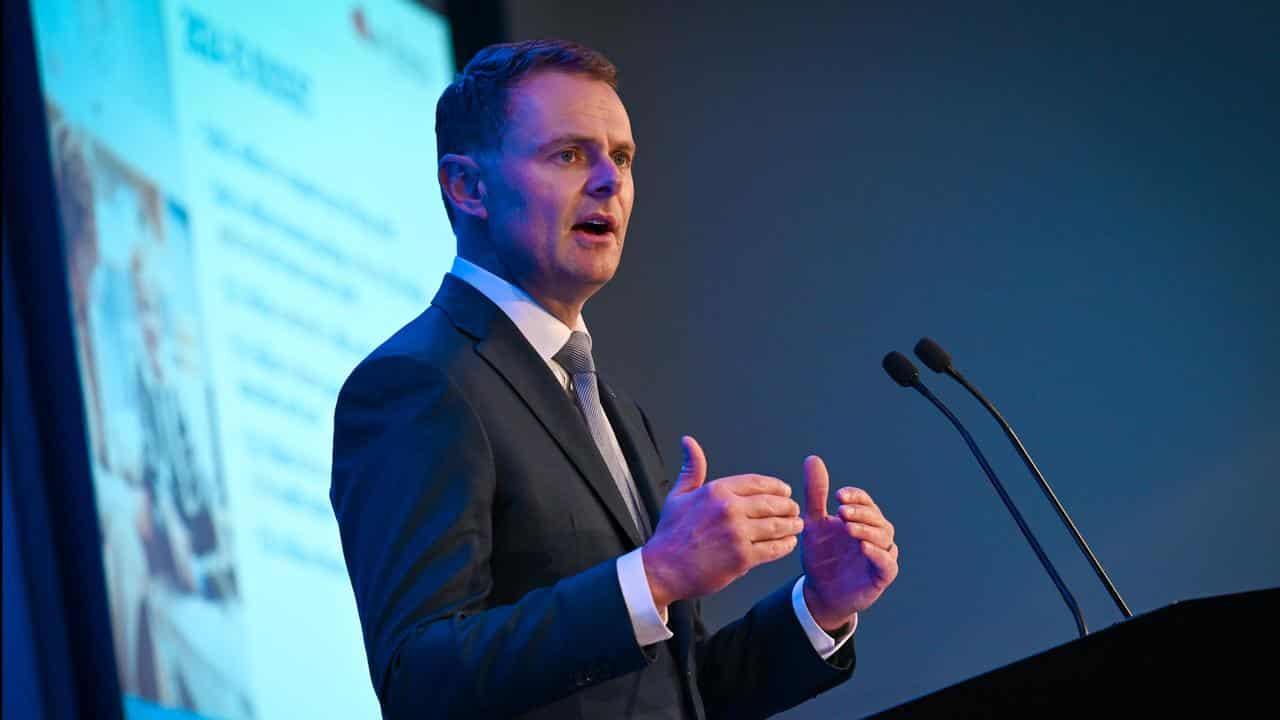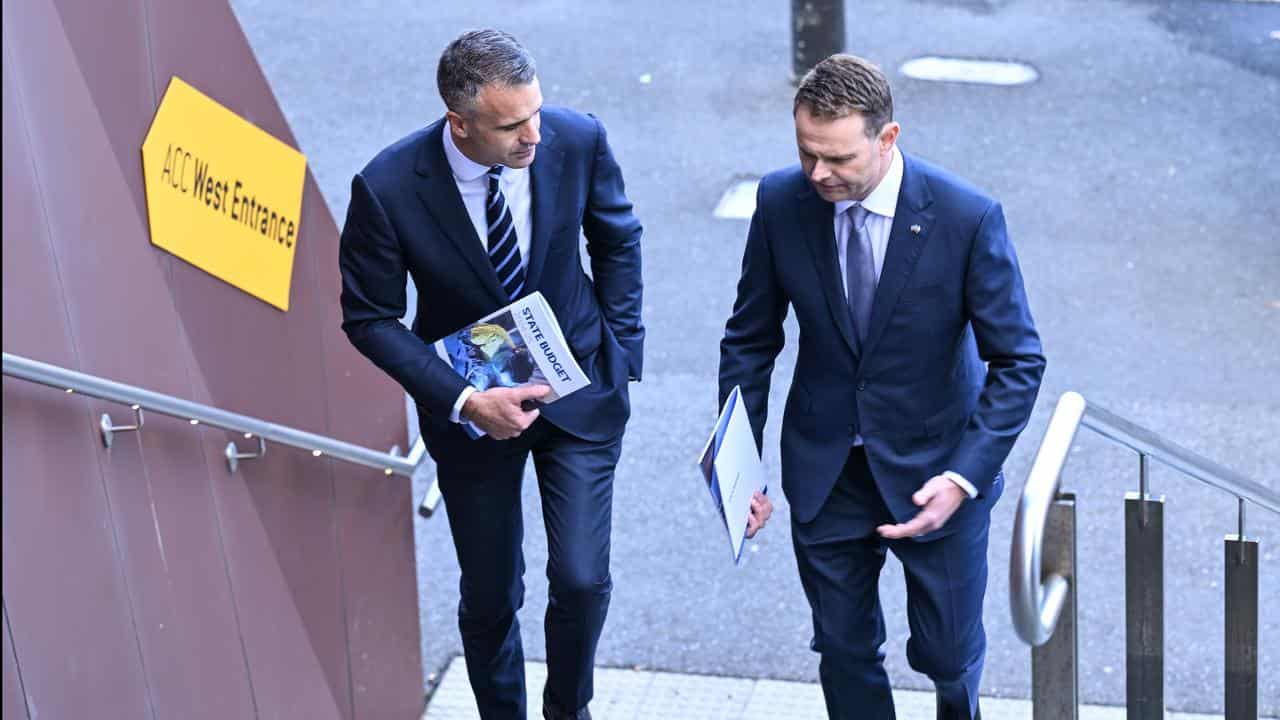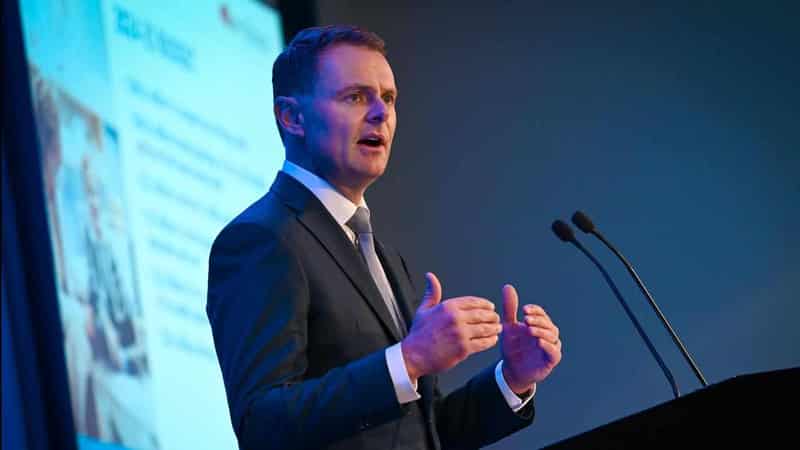
Cost-of-living relief for low-income households and big boosts for the health system and skills training have headlined South Australia's state budget.
Announcing a forecast surplus of $306 million for 2023/24, Treasurer Stephen Mullighan said a strong economy had boosted government coffers, meaning it could deliver cost-of-living relief to those who needed it most.
A $248 million surplus is predicted for 2024/25.
"This is a budget specifically designed to make sure that our state can secure the full benefits of all the transformative economic developments that are heading our way, but it’s also a budget which responds to the challenges that confront us today," he said.

Strong revenue underpinned by payroll tax, stamp duty and land tax put the government in an enviable position.
There were no new taxes, no public service job cuts and most fees and charges were indexed by three per cent.
Stamp duty has been abolished for all eligible first home buyers.
Premier Peter Malinauskas said it was a budget that delivered cost-of-living support to South Australians while building for the future.
There is $25.6 billion in infrastructure funding over four years, with $7 billion across the forward estimates for the River Torrens to Darlington road project to complete the city’s North-South transport corridor.
A further $3.2 billion has been put aside for a new Women’s and Children’s Hospital, expected to be completed by June 2031.
Those projects will contribute to government debt ballooning by $16.3 billion over the next four years to $44.2 billion in 2027/28.
Mr Mullighan said he was comfortable it was at an affordable and sustainable level, despite its record trajectory.

Liberal finance spokesman Matt Cowdrey said the average South Australian family remained more than $20,000 worse off under a Labor government, with its cost-of-living relief a drop in the ocean.
"Instead of providing relief like energy rebates for all South Australians, Peter Malinauskas has cut the initiative all together," he said.
"(He) has unleashed a debt bomb on future generations of South Australians with debt almost guaranteed to pass $50 billion beyond the forward estimates."
A record housing budget of $843 million includes $576 million to redevelop government land at Seaton in the western suburbs and at Noarlunga Downs in the south, to deliver more than 1900 homes.
Mr Malinauskas said the government was putting money in the pockets of our most vulnerable "at the time they most need it".
A one-off cost-of-living payment of $243.90 will be paid to concession card holders at a cost of $51.5 million, benefiting 210,000 households.
Eligible tenants and seniors card holders will also have their annual cost-of-living payments doubled to this amount.

SA Council of Social Service chief executive Ross Womersley welcomed the increase in relief payments and eligibility but said more housing support was needed.
"We have long argued that they need to build 1000 public housing properties a year. And this budget doesn't deliver anywhere near that kind of investment," he said.
A wider cost-of-living package of $266 million includes a $200 reduction in school materials and services charges in 2025 and a doubling of the $100 school sports vouchers program.
There is an extra $2.5 billion over five years for the health system, including $1.6 billion to cover higher costs and $742 million for increased hospital demand, as it tries to reduce ramping and free up overloaded emergency departments.
Skills funding will increase by 43 per cent to $692 million over the next five years, including $275 million for 160,000 training places, prioritising future skills required in areas such as defence and health.
There is $715 million over five years to deliver preschool for three-year-olds in South Australia, with the rollout to begin in 2026.









